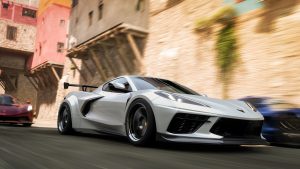More and more rumors continue to circulate regarding the upcoming Nintendo Switch 2. The latest comes in the form of Nate the Hate’s podcast where he goes over various rumours as well as gives a bit of new information that he’s been told about the system. Towards the end of his show, Nate the Hate said that he’s been given the green light to report that the Nintendo Switch 2 will feature Ray Reconstruction.
With that inclusion, it would suggest that the system will support DLSS 3.5, and possibly future versions.
“Ray Reconstruction is a new option for developers to improve image quality for their ray-traced titles and is offered as part of DLSS 3.5,” according to Nvidia.
It’s “a new AI model that creates higher quality ray-traced images for intensive ray-traced games and apps.”
As far as other features, Nate the Hate says that the Switch 2 won’t include frame generation as part of its custom feature set.
“This ensures that this is going to be a viable platform that’s not going to be outdated come, you know, 2026,” he said.
When do you think we finally hear about the Nintendo Switch 2 and its features like Ray Reconstruction in an official capacity from Nintendo? For more Insider Gaming, check out all of the achievements in Alan Wake 2.











“Ray Reconstruction is a new option for developers to improve image quality for their ray-traced titles and is offered as part of DLSS 3.5”
Lmfao. Gotta love Nvidias developer portals frank understatements.
Ray reconstruction moves rt denoising off of the cuda cores, and onto the tensor cores, where they have the compute power to do much more work in about the same or less amount of time as the cuda cores. Most benches are finding a few frames inprovement.
Nvidia gpu’s are almost always so much faster than The cpu’s,
Nvidia just keeps trying to find new ways to keep the gpu busy.
But on a much smaller gpu, with much smaller cuda compute, moving denoising off the cuda cores and onto the tensor cores (up to 8x, 16x, 32x compute performance increase by data type, for less power and bandwidth cost) is an exponentially massive performance win.